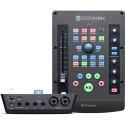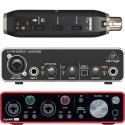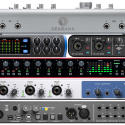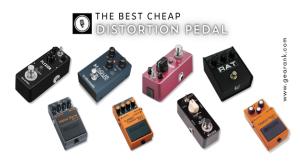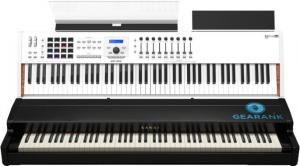Universal Audio Volt 2 Review: USB-C Audio Interface - 2 Analog Inputs
Street Price:
Manufacturer:
Product Links:

Volt Action
Universal Audio joins the affordable, desktop audio interface bout with the Volt series. The Volt 2 directly competes with similar offerings from other manufacturers like Focusrite and Presonus. How does it stack up against them and what does it bring to the table?
I've been through a lot of Audio Interfaces over the years. I started out with a Tascam Us-122 MKII and at that time I was just happy to have a means to record. Other audio interfaces felt like they were a huge jump up in price that I didn't have a reference point for how necessary a good one is for the raw tracks. After I upgraded to a second gen Focusrite 4i4, I immediately noticed a huge jump in quality. I had an easier time mixing both vocals and D.I. instruments thanks to the better quality preamps.
Fast forward to 2022 and the market is inundated with so many affordable audio interfaces. We're at the point where each major manufacturer offers an affordable version with trickled down tech from their more expensive interfaces. SSL, Steinberg, Presonus and Audient all offer one at this price point.
Universal Audio isn't one to miss out. The Volt series is their way of kicking the notch up in quality for interfaces at this price point. It features a preamp section based on their 610 tube preamp/consoles; famous for records like "Harvest" by Neil Young, "LA Woman" by The Doors and quite a few mention "Van Halen 1" by Van Halen was recorded on one. With this catalog of hits, it's impossible not to have high expectations about Universal Audio's implementation of the preamp's sound into a compact audio interface.
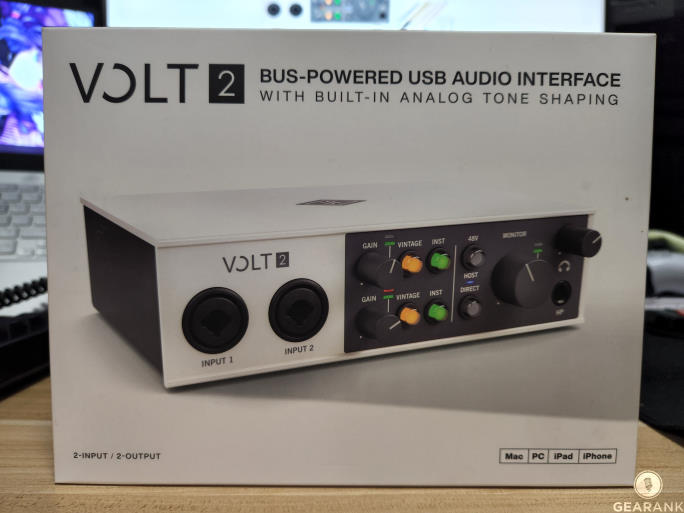


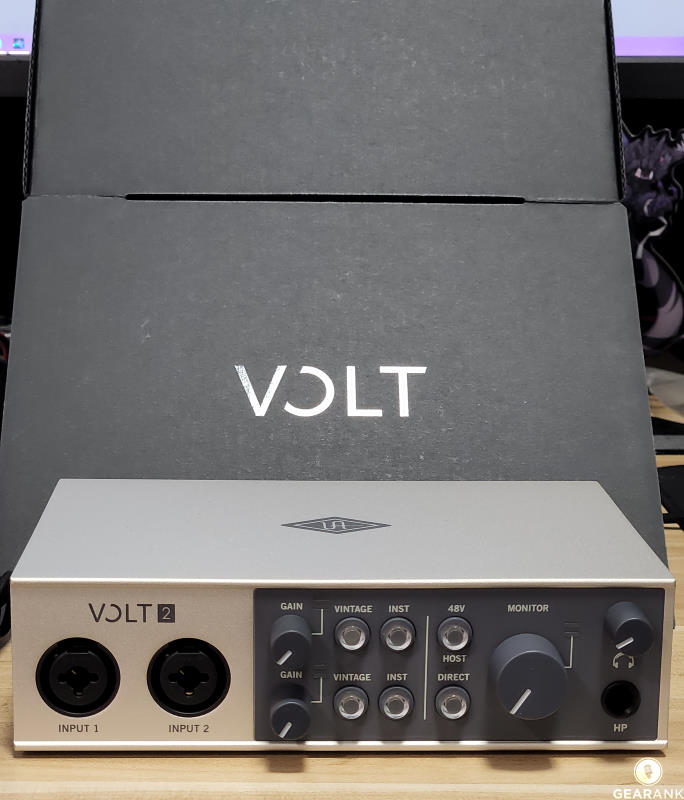
Unboxing: The Universal Audio Volt 2 comes packaged in a premium looking box. Completely irrelevant to how the unit sounds but I enjoyed the unboxing experience as I felt like it was a more premium audio interface.
The UA Volt 2 impressed me from the unboxing; an inconsequential thing for most but the presentation really impressed me and it felt like it was a lot more expensive. The chassis is a combination of a powder coated black lower half and a textured, matte silver upper bout. This combo adds to the premium feel of the unit. The knobs felt smooth and had just the right resistance for finer adjustments. The buttons for phantom power, monitoring and engaging the vintage mode of the preamps are clear buttons with a raised plastic surround. The buttons themselves illuminate when activated and have a very high quality, tactile feel that inspires confidence in the long term durability of the unit.
The XLR combo plugs are made by Amphenol and are also of high quality. The knobs are accompanied by 2 LED lights each to indicate signal and clipping. While the monitor host/direct switch has an indicator for which routing is activated. At the back, the two monitor out jacks are secured with a nut and washer. Compared to Focusrite for example, where the jacks are made of plastic and soldered into the internals, this feels more solid and again, it inspires confidence in the long term durability of the interface. The Midi I/O jacks are standard fare. I want to note the use of a big power switch on the back for such a small interface. All these high quality parts just come together to a whole that I reiterate to be a solidly built interface.
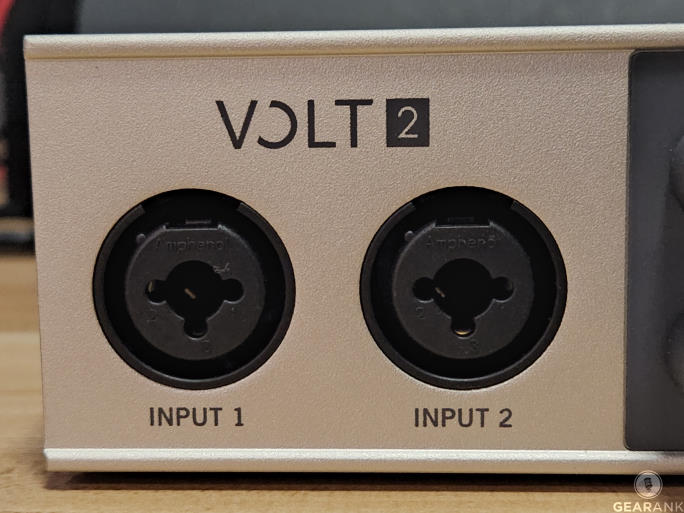

Top: Amphenol brand jacks grace the front of the interface.
Bottom: 2 cables are included: one for the data and one for power.
One odd thing that struck me is that to connect the interface, Universal Audio supplies you with two USB cables: One for the data going into your PC or mobile device, and another for power from another USB port. I usually get a power supply that plugs into a wall socket along with a USB cable. My guess is that the added power is needed for the preamp circuitry to operate at a higher current.
It might be a bit early to address a personal con that I think would be a non issue for most but I did feel that in order to access the software controller for the interface, you need to make an account and log into it. Other interfaces are plug and play and the drivers don't require the input of any personal information. Again, this is more of a personal thing but it did get in the way of my excitement to try the interface.
But how does it sound?
Universal Audio Volt 2 / Presonus ioStation 24c Voice Over Comparison
As is, without the vintage mode on, the interface sounded very neutral, comparable to the XMAX Preamps on my Presonus ioStation 24c with a little bit more extended high frequencies. It's subtle but I can definitely hear it while recording. Down the line this makes a good starting point for raw tracks that are going to be processed heavily. With the vintage mode on however, additional harmonics are added at the upper mid and high frequencies. It's not an EQ by the way. Additional harmonics are a byproduct of circuit design and adds a bit more density/smoothness compared to just boosting it with EQ. So having the option of engaging upper frequency harmonics is a great option especially for warmer sounding microphones like the Rode NT1.
I found that the Vintage Mode paired with a bright mic like the Lewitt LCT 440 Pure to be a bit too strident on the high frequencies, but this is an error of redundancy. It's a good thing that Universal Audio made the vintage mode a toggle because the Lewitt sounded better with it off. Having it only have the vintage mode on all the would have been a deal breaker

The clear buttons of the Volt 2 light up when activated.
Latency was a bit slower than my Presonus ioStation 24c, but that is an unfair comparison given that my interface and DAW (Studio One) were designed around and optimized for each other. It's still really fast compared to cheaper interfaces out there in terms of round trip time and I had no problem monitoring myself with a few plugins in the chain. 1 to 2 milliseconds of difference is negligible for monitoring.
It had no problems driving my headphones as well. I use 250 Ohm Beyerdynamic DT 770 Pros and DT 990 Pros in my studio. I was able to get them up to a good level with minimal distortion from the headphone amp. One thing to note that direct monitoring can be selected as stereo or mono (the button can be pressed multiple times).
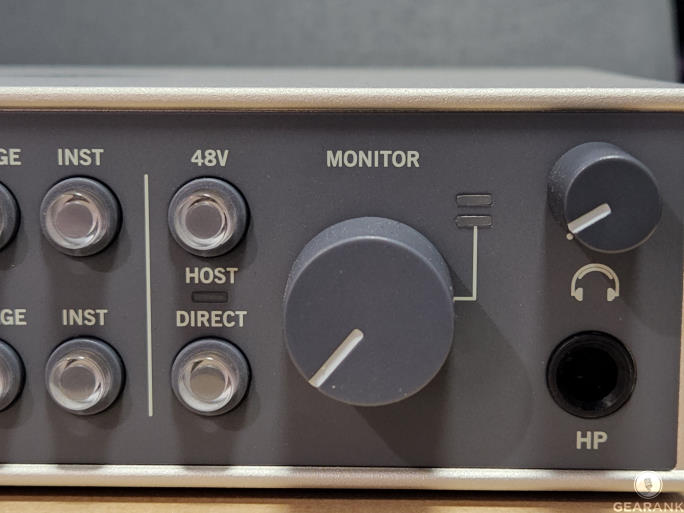
Compared to the Focusrite Scarlett Solo, Independent speaker and headphone controls are a welcome addition.
One thing to note is the bundled software. It has a great amount of plugins from developers like Brainworx, Celemony (yes, it's bundled with Melodyne Essential!) and more. With Melodyne becoming more and more a requirement for any mix engineer, seeing it bundled with the interface along with virtual instruments and carefully curated plugins brings the value up a few notches.
Specifications
- A/D Resolution: 24-bit/96kHz
- Connectors: 1 x USB-C to USB-A cable, 1 x USB Power cable
- Simultaneous Channels: 2 x 2
- Inputs: 2 x XLR-1/4" combo (mic/instrument), MIDI IN
- Outputs: 2 x 1/4" (L/R), 1 x 1/4" (Headphones), MIDI OUT
- Features: Preamps based on the Universal Audio 610 Preamp, Midi I/O
- Power: Bus Powered (dedicated power cable included)
- Phantom Power: Yes (+48v)
- Bundled Software:Ableton Live 11 Lite, Melodyne Essential, Brainworx Ampeg® SVT-VR Classic Bass Amp, Softube Marshall Plexi Classic Amplifier, LX480 Essentials, Virtual Drummer DEEP, Virtual Bassist DANDY, Spitfire Audio LABS
Cons
- Access to the interface control software requires account and login
- Vintage mode may be too strident with bright mics
Pros
- Vintage preamp mode adds life to darker sounding voices, mics and instruments
- Excellent build quality at this price point
- Versatile monitoring options
- Top tier software suite included

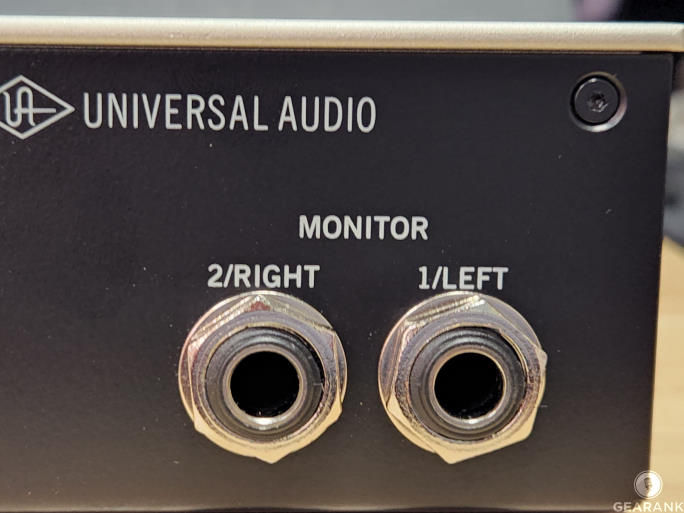

Additional photos of the Universal Audio Volt 2 Audio Interface
Overall
The Universal Audio Volt 2 is a great entry into a market that's already crowded. While it does so without adding too much novelty into the mix, the build quality, bundled software and the preamp design makes it a great value. The richness that the preamp provides adds a lot of tonal nuance to those that know what to look for. Get it if you're looking to get that 610 preamp magic into your mixes without breaking the bank.
Gearank Recommended
Related Gear
Behringer UCA222 - a compact USB audio interface with stereo RCA I/O.




